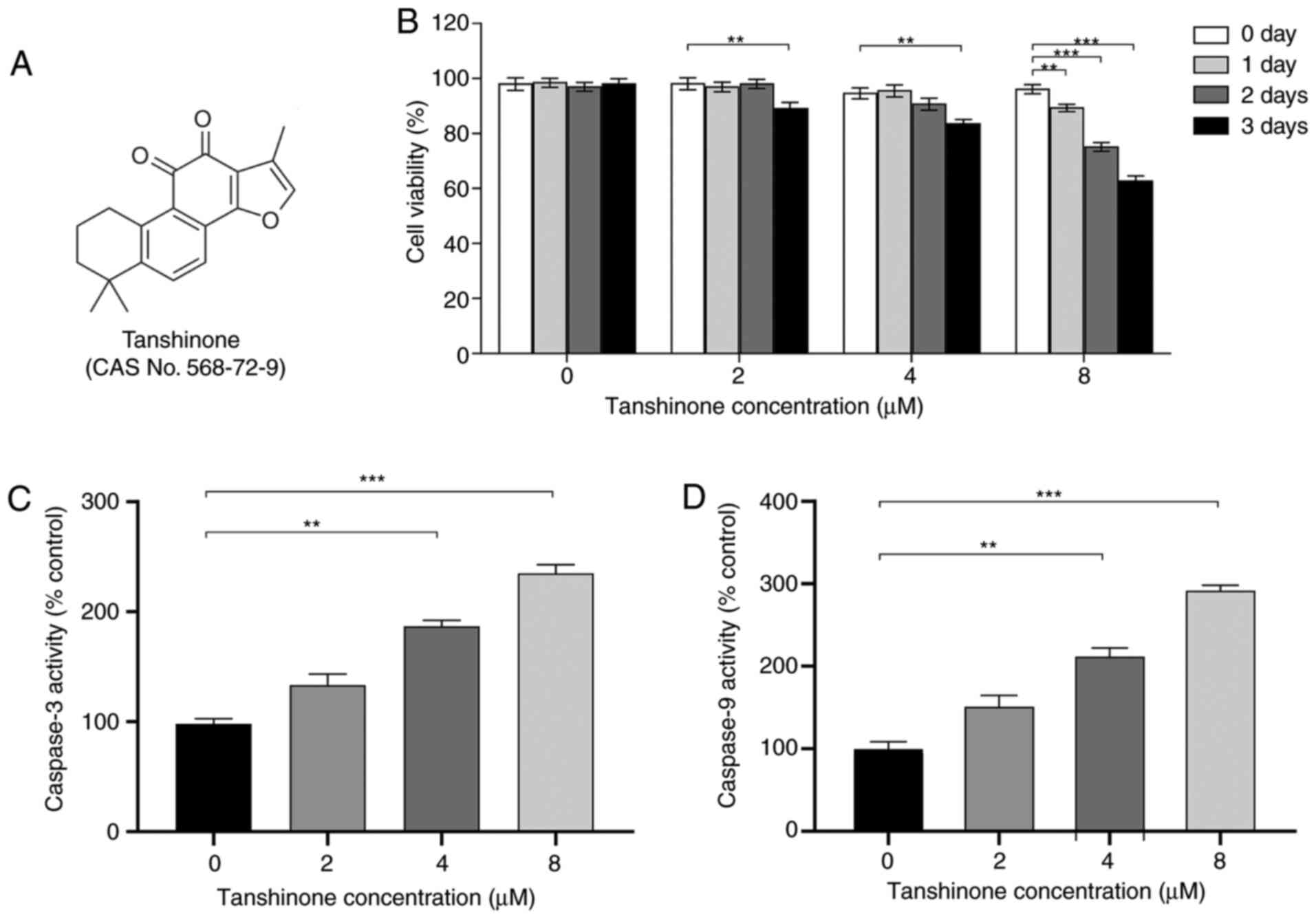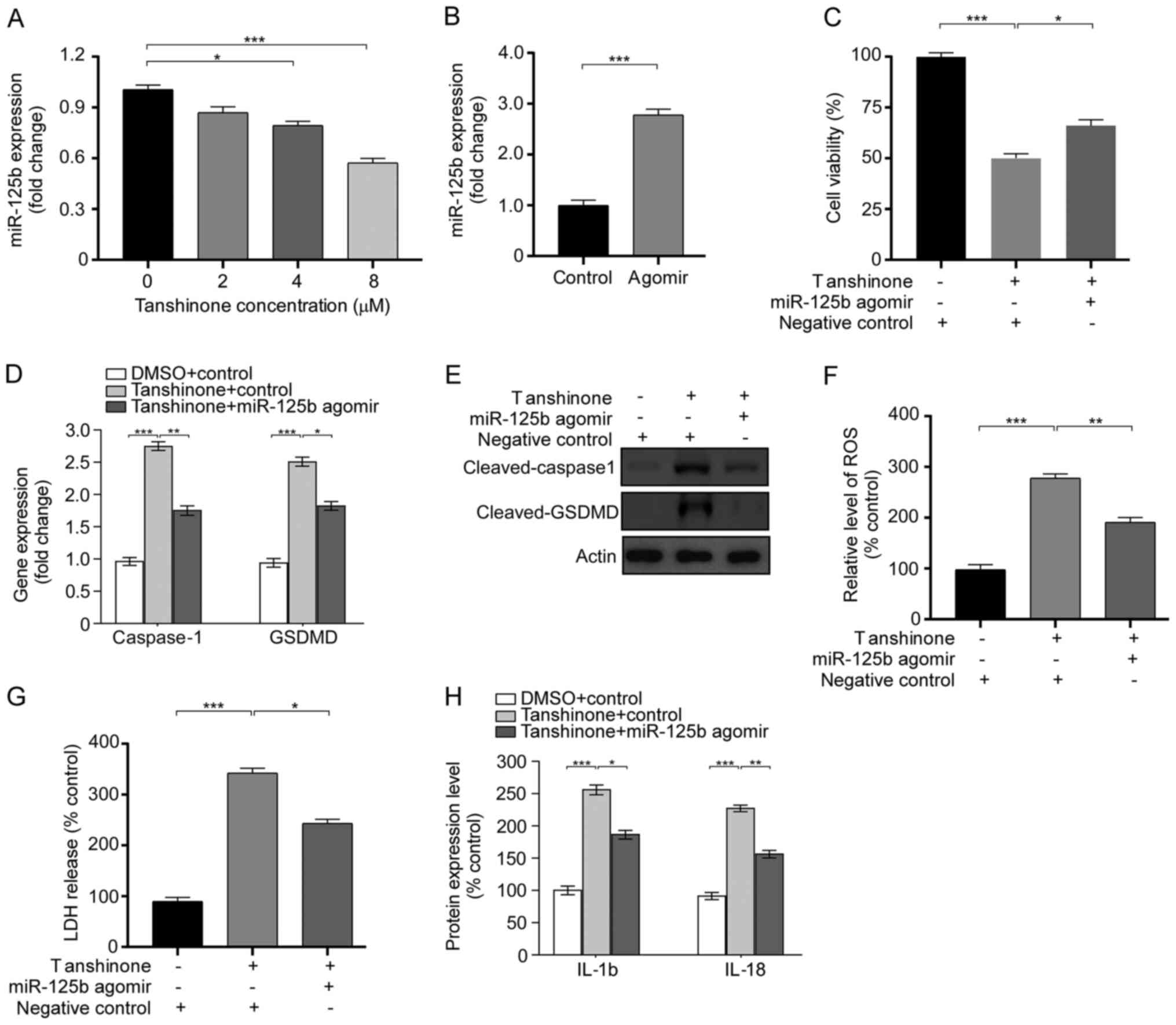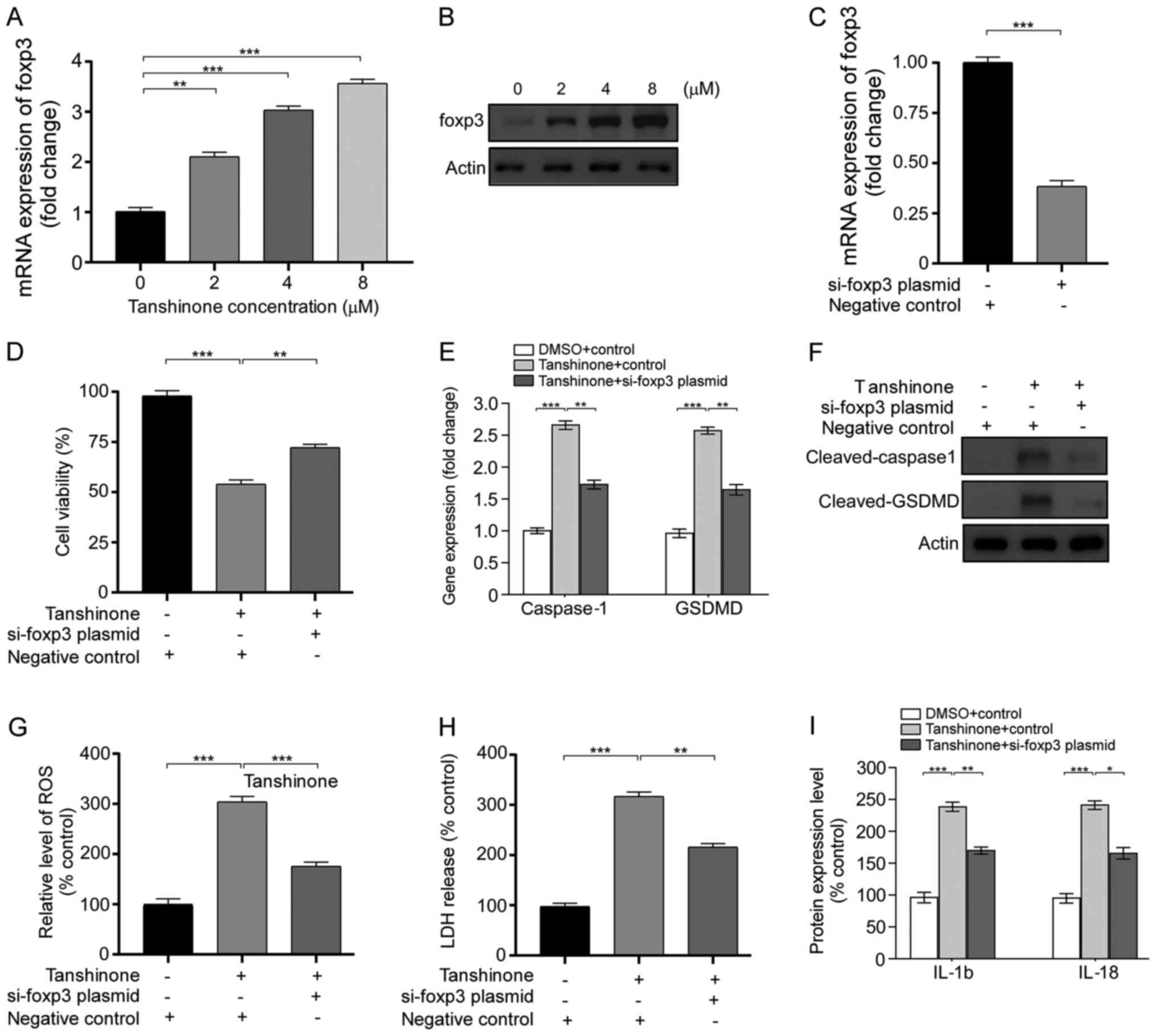|
1
|
Chua MLK, Wee JTS, Hui EP and Chan ATC:
Nasopharyngeal carcinoma. Lancet. 387:1012–1024. 2016. View Article : Google Scholar : PubMed/NCBI
|
|
2
|
Bray F, Ferlay J, Soerjomataram I, Siegel
RL, Torre LA and Jemal A: Global cancer statistics 2018: GLOBOCAN
estimates of incidence and mortality worldwide for 36 cancers in
185 countries. CA Cancer J Clin. 68:394–424. 2018. View Article : Google Scholar : PubMed/NCBI
|
|
3
|
Zhang Y, Chen L, Hu GQ, Zhang N, Zhu XD,
Yang KY, Jin F, Shi M, Chen YP, Hu WH, et al: Gemcitabine and
cisplatin induction chemotherapy in nasopharyngeal carcinoma. N
Engl J Med. 381:1124–1135. 2019. View Article : Google Scholar : PubMed/NCBI
|
|
4
|
Chen YP, Chan ATC, Le QT, Blanchard P, Sun
Y and Ma J: Nasopharyngeal carcinoma. Lancet. 394:64–80. 2019.
View Article : Google Scholar : PubMed/NCBI
|
|
5
|
Tang LQ, Chen DP, Guo L, Mo HY, Huang Y,
Guo SS, Qi B, Tang QN, Wang P, Li XY, et al: Concurrent
chemoradiotherapy with nedaplatin versus cisplatin in stage II–IVB
nasopharyngeal carcinoma: An open-label, non-inferiority,
randomised phase 3 trial. Lancet Oncol. 19:461–473. 2018.
View Article : Google Scholar : PubMed/NCBI
|
|
6
|
Sui H, Zhao J, Zhou L, Wen H, Deng W, Li
C, Ji Q, Liu X, Feng Y, Chai N, et al: Tanshinone IIA inhibits
β-catenin/VEGF-mediated angiogenesis by targeting TGF-β1 in
normoxic and HIF-1α in hypoxic microenvironments in human
colorectal cancer. Cancer Lett. 403:86–97. 2017. View Article : Google Scholar : PubMed/NCBI
|
|
7
|
Liu Y, Tong C, Tang Y, Cong P, Liu Y, Shi
X, Shi L, Zhao Y, Jin H, Li J and Hou M: Tanshinone IIA alleviates
blast-induced inflammation, oxidative stress and apoptosis in mice
partly by inhibiting the PI3K/Akt/FoxO1 signaling pathway. Free
Radic Biol Med. 152:52–60. 2020. View Article : Google Scholar : PubMed/NCBI
|
|
8
|
Li N, Yang L, Zhang B and Chen S:
Tanshinone IIA effects on ovarian cancer cell line. J Pharm
Pharmacol. 70:1369–1377. 2018. View Article : Google Scholar : PubMed/NCBI
|
|
9
|
Liu Z, Zhu W, Kong X, Chen X, Sun X, Zhang
W and Zhang R: Tanshinone IIA inhibits glucose metabolism leading
to apoptosis in cervical cancer. Oncol Rep. 42:1893–1903.
2019.PubMed/NCBI
|
|
10
|
Xu Z, Chen L, Xiao Z, Zhu Y, Jiang H, Jin
Y, Gu C, Wu Y, Wang L, Zhang W, et al: Potentiation of the
anticancer effect of doxorubicinin drug-resistant gastric cancer
cells by tanshinone IIA. Phytomedicine. 51:58–67. 2018. View Article : Google Scholar : PubMed/NCBI
|
|
11
|
Tong W, Guo J and Yang C: Tanshinone II A
enhances pyroptosis and represses cell proliferation of HeLa cells
by regulating miR-145/GSDMD signaling pathway. Biosci Rep.
40:BSR202002592020. View Article : Google Scholar : PubMed/NCBI
|
|
12
|
Ren X, Wang C, Xie B, Hu L, Chai H, Ding
L, Tang L, Xia Y and Dou X: Tanshinone IIA induced cell death via
miR30b-p53-PTPN11/SHP2 signaling pathway in human hepatocellular
carcinoma cells. Eur J Pharmacol. 796:233–241. 2017. View Article : Google Scholar : PubMed/NCBI
|
|
13
|
Wang Y, Gao W, Shi X, Ding J, Liu W, He H,
Wang K and Shao F: Chemotherapy drugs induce pyroptosis through
caspase-3 cleavage of a gasdermin. Nature. 547:99–103. 2017.
View Article : Google Scholar : PubMed/NCBI
|
|
14
|
Zhang T, Li Y, Zhu R, Song P, Wei Y, Liang
T and Xu G: Transcription factor p53 suppresses tumor growth by
prompting pyroptosis in non-small-cell lung cancer. Oxid Med Cell
Longev. 2019:87468952019. View Article : Google Scholar : PubMed/NCBI
|
|
15
|
Pizato N, Luzete BC, Kiffer LFMV, Corrêa
LH, de Oliveira Santos I, Assumpção JAF, Ito MK and Magalhães KG:
Omega-3 docosahexaenoic acid induces pyroptosis cell death in
triple-negative breast cancer cells. Sci Rep. 8:19522018.
View Article : Google Scholar : PubMed/NCBI
|
|
16
|
Zeng QZ, Yang F, Li CG, Xu LH, He XH, Mai
FY, Zeng CY, Zhang CC, Zha QB and Ouyang DY: Paclitaxel enhances
the innate immunity by promoting NLRP3 inflammasome activation in
macrophages. Front Immunol. 10:722019. View Article : Google Scholar : PubMed/NCBI
|
|
17
|
Batool A, Wang YQ, Hao XX, Chen SR and Liu
YX: A miR-125b/CSF1-CX3CL1/tumor-associated macrophage recruitment
axis controls testicular germ cell tumor growth. Cell Death Dis.
9:9622018. View Article : Google Scholar : PubMed/NCBI
|
|
18
|
Livak KJ and Schmittgen TD: Analysis of
relative gene expression data using real-time quantitative PCR and
the 2(-Delta Delta C(T)) method. Methods. 25:402–408. 2001.
View Article : Google Scholar : PubMed/NCBI
|
|
19
|
Wen J, Chang Y, Huo S, Li W, Huang H, Gao
Y, Lin H, Zhang J, Zhang Y, Zuo Y, et al: Tanshinone IIA attenuates
atherosclerosis via inhibiting NLRP3 inflammasome activation. Aging
(Albany NY). 13:910–932. 2020.PubMed/NCBI
|
|
20
|
Wang S, Wu J, Ren J, Vlantis AC, Li MY,
Liu SYW, Ng EKW, Chan ABW, Luo DC, Liu Z, et al: MicroRNA-125b
interacts with Foxp3 to induce autophagy in thyroid cancer. Mol
Ther. 26:2295–2303. 2018. View Article : Google Scholar : PubMed/NCBI
|
|
21
|
Blanchard P, Lee A, Marguet S, Leclercq J,
Ng WT, Ma J, Chan AT, Huang PY, Benhamou E, Zhu G, et al:
Chemotherapy and radiotherapy in nasopharyngeal carcinoma: An
update of the MAC-NPC meta-analysis. Lancet Oncol. 16:645–655.
2015. View Article : Google Scholar : PubMed/NCBI
|
|
22
|
Kamel R, Al-Badawy S, Khairy A, Kandil T
and Sabry A: Nasal and paranasal sinus changes after radiotherapy
for nasopharyngeal carcinoma. Acta Otolaryngol. 124:532–535. 2004.
View Article : Google Scholar : PubMed/NCBI
|
|
23
|
Jiang L, Huang C, Gan Y, Wu T, Tang X,
Wang Y, Wang R and Zhang Y: Radiation-induced late dysphagia after
intensity- modulated radiotherapy in nasopharyngeal carcinoma
patients: A dose-volume effect analysis. Sci Rep. 8:163962018.
View Article : Google Scholar : PubMed/NCBI
|
|
24
|
Tsujii H, Kamada T, Tsuji H, Takamura A,
Matsuoka Y, Usubuchi H and Irie G: Improved results in the
treatment of nasopharyngeal carcinoma using combined radiotherapy
and chemotherapy. Cancer. 63:1668–1672. 1989. View Article : Google Scholar : PubMed/NCBI
|
|
25
|
Lu L, Barbi J and Pan F: The regulation of
immune tolerance by FOXP3. Nat Rev Immunol. 17:703–717. 2017.
View Article : Google Scholar : PubMed/NCBI
|
|
26
|
Vignali DA, Collison LW and Workman CJ:
How regulatory T cells work. Nat Rev Immunol. 8:523–532. 2008.
View Article : Google Scholar : PubMed/NCBI
|
|
27
|
Yang S, Liu Y, Li MY, Ng CSH, Yang SL,
Wang S, Zou C, Dong Y, Du J, Long X, et al: FOXP3 promotes tumor
growth and metastasis by activating Wnt/β-catenin signaling pathway
and EMT in non-small cell lung cancer. Mol Cancer. 16:1242017.
View Article : Google Scholar : PubMed/NCBI
|
|
28
|
Zhang G, Zhang W, Li B, Stringer-Reasor E,
Chu C, Sun L, Bae S, Chen D, Wei S, Jiao K, et al: MicroRNA-200c
and microRNA-141 are regulated by a FOXP3-KAT2B axis and associated
with tumor metastasis in breast cancer. Breast Cancer Res.
19:732017. View Article : Google Scholar : PubMed/NCBI
|
|
29
|
Gao Y, Li X, Shu Z, Zhang K, Xue X, Li W,
Hao Q, Wang Z, Zhang W, Wang S, et al: Nuclear galectin-1-FOXP3
interaction dampens the tumor-suppressive properties of FOXP3 in
breast cancer. Cell Death Dis. 9:4162018. View Article : Google Scholar : PubMed/NCBI
|
|
30
|
Germanidis G, Argentou N, Hytiroglou P,
Vassiliadis T, Patsiaoura K, Germenis AE and Speletas M: Liver
FOXP3 and PD1/PDL1 expression is down-regulated in chronic HBV
hepatitis on maintained remission related to the degree of
inflammation. Front Immunol. 4:2072013. View Article : Google Scholar : PubMed/NCBI
|
|
31
|
Yang C, Huang XR, Fung E, Liu HF and Lan
HY: The regulatory T-cell transcription factor Foxp3 protects
against crescentic glomerulonephritis. Sci Rep. 7:14812017.
View Article : Google Scholar : PubMed/NCBI
|
|
32
|
Tang L, Chen Y, Xiang Q, Xiang J, Tang Y
and Li J: The association between IL18, FOXP3 and IL13 genes
polymorphisms and risk of allergic rhinitis: A meta-analysis.
Inflamm Res. 69:911–923. 2020. View Article : Google Scholar : PubMed/NCBI
|
|
33
|
Rupaimoole R and Slack FJ: MicroRNA
therapeutics: Towards a new era for the management of cancer and
other diseases. Nat Rev Drug Discov. 16:203–222. 2017. View Article : Google Scholar : PubMed/NCBI
|
|
34
|
Bartel DP: MicroRNAs: Genomics,
biogenesis, mechanism, and function. Cell. 116:281–297. 2004.
View Article : Google Scholar : PubMed/NCBI
|
|
35
|
Jin W, Chen F, Wang K, Song Y, Fei X and
Wu B: miR-15a/miR-16 cluster inhibits invasion of prostate cancer
cells by suppressing TGF-β signaling pathway. Biomed Pharmacother.
104:637–644. 2018. View Article : Google Scholar : PubMed/NCBI
|
|
36
|
Hong S, Yan Z, Wang H, Ding L, Song Y and
Bi M: miR-663b promotes colorectal cancer progression by activating
Ras/Raf signaling through downregulation of TNK1. Hum Cell.
33:104–115. 2020. View Article : Google Scholar : PubMed/NCBI
|
|
37
|
Li A, Shuai X, Jia Z, Li H, Liang X, Su D
and Guo W: Ganoderma lucidum polysaccharide extract inhibits
hepatocellular carcinoma growth by downregulating regulatory T
cells accumulation and function by inducing microRNA-125b. J Transl
Med. 13:1002015. View Article : Google Scholar : PubMed/NCBI
|
|
38
|
Zeng CW, Zhang XJ, Lin KY, Ye H, Feng SY,
Zhang H and Chen YQ: Camptothecin induces apoptosis in cancer cells
via microRNA-125b-mediated mitochondrial pathways. Mol Pharmacol.
81:578–586. 2012. View Article : Google Scholar : PubMed/NCBI
|
|
39
|
Hossainzadeh S, Ranji N, Naderi Sohi A and
Najafi F: Silibinin encapsulation in polymersome: A promising
anticancer nanoparticle for inducing apoptosis and decreasing the
expression level of miR-125b/miR-182 in human breast cancer cells.
J Cell Physiol. 234:22285–22298. 2019. View Article : Google Scholar : PubMed/NCBI
|


















